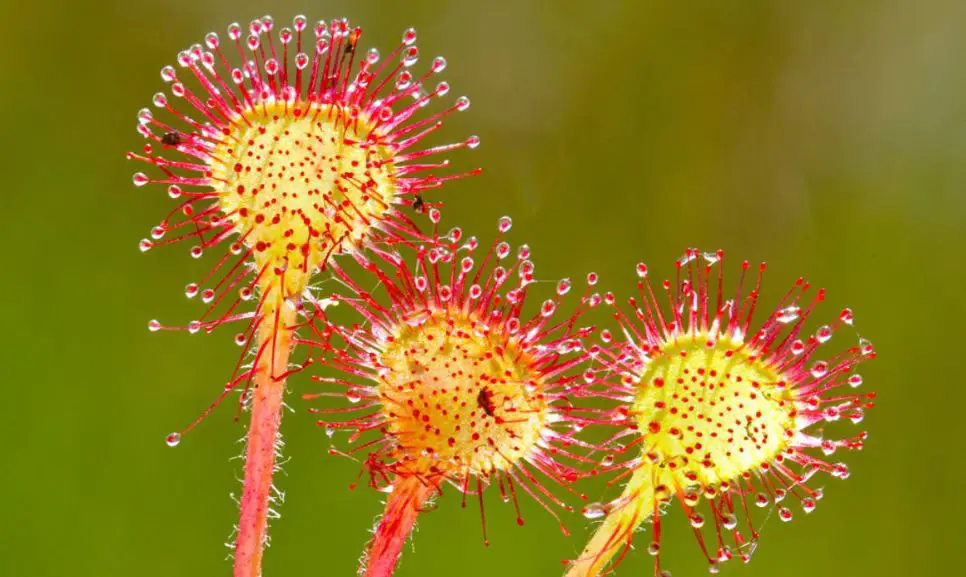The carnivorous plants known as sundews (Drosera spp.) have a cunning method of capturing their prey. Sticky pads on carnivorous sundew plants catch insects. The plants are very attractive, with rosettes that are often vividly colored. Sundews are often grown in terrariums or warm, humid environments resembling their native bog home. With a few maintenance instructions, you may start to appreciate this intriguing plant.

Information about Sundew Plants
The number of sundew species exceeds 90. They grow in hot, humid regions of Georgia, Florida, and other states with comparable conditions, although most are in Australia and South Africa. The plants often grow on top of sphagnum moss, are found in areas with bogs or marshes, and favor acidic soils. Sundews belong to the Drosera genus, and popular cultivars may often be found at plant nurseries.
Information about sundew plants would be incomplete without describing the trap’s workings. The plant has little arms or stems with filaments that join at the terminals. These filaments emit a chemical that can digest tiny prey and catch it. After the bug is digested, the arms fold to retain it for four to six days.
Growing Sundews
Carnivorous sundew plants are good for removing gnats and other small insects, whether outdoors or inside. When grown in pots with sphagnum moss, vermiculite, or perlite, sundew plants do well. For optimum development, the pot has to be kept consistently wet, and a humid environment is ideal.
Warm, humid conditions are required for carnivorous sundew plants. Plants in the outdoors thrive when placed next to a water feature or even on moist ground. When growing sundews outside, fully till the soil and include sphagnum moss to raise the acidity. The plant does best in full sun but can also be grown in partial light.
How to Take Care of a Sundew
While potted plants do not need fertilizer, they need distilled water or rainfall since they can not tolerate high mineral concentrations.
Provide a humidity range of 40% to 60%. Placing a tray with tiny stones below the plant and filling it with water is simple. The evaporation will assist in moistening the surrounding air.
When they appear, remove the wasted stems and leaves. As they outgrow their pots, transplant them.
Drosera comes in a variety of hardier types than others. Contact the local extension office for the best plants for your region face. Grow an interesting and practical plant in your yard by following the care recommendations for sundews.

